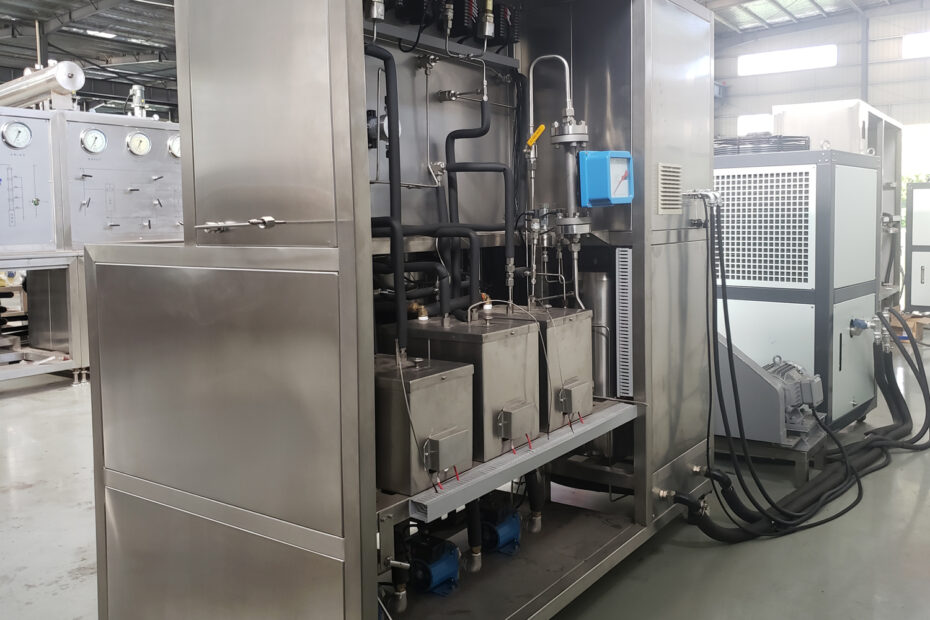In the quest for sustainable and efficient extraction methods, supercritical CO2 fluid extraction has emerged as a groundbreaking technique, particularly in the realm of obtaining natural edible pigments.
Supercritical CO₂ fluid extraction technology is an emerging extraction and separation technology in the food industry. Compared with the traditional organic reagent method, the products produced using supercritical CO₂ fluid extraction technology have no solvent residue and pollution, which can avoid the extraction of the extract at high temperatures.
Thermal deterioration protects the activity of physiologically active substances and preserves the natural flavor of the extract. Therefore, supercritical CO₂ fluid extraction technology has been applied to the extraction and refining of natural food pigments such as capsanthin, lycopene, β-carotene and gardenia yellow.
Three major properties of edible natural pigments
Natural pigments are colorants widely used in the food industry, cosmetics industry and pharmaceutical industry. As important food additives, edible natural colors have many beneficial properties:
- Edible natural pigments are derived from tissues of animals, plants, and microorganisms, so most of them have no side effects and are highly safe;
- Some edible acetate itself is a nutrient and has nutritional effects;
- Eating natural pigments can better imitate the color of natural products and make the tone more natural.
Supercritical CO2 fluid extraction involves utilizing carbon dioxide in a state beyond its critical temperature and pressure, leading to a substance that displays both liquid and gas properties. This unique state allows it to act as an effective solvent for extracting compounds, including natural pigments from edible sources.
Top 3 Advantages Of Supercritical CO2 Extraction Process
- Selectivity:Targets specific compounds, minimizing impurities in the extracted pigments.
- Low Environmental Impact:CO2 is non-toxic and easily recyclable, reducing environmental footprint.
- Preservation of Pigment Integrity:Operates at lower temperatures, preserving the delicate structure of pigments.
Operational Requirements For Supercritical CO2 Extraction Process
| Requirement | Description |
|---|---|
| Pressure: | Maintaining pressure above 73.8 bar and temperature beyond 31.1°C, ensuring CO2 is in a supercritical state. |
| CO2 Purity: | Use high-purity carbon dioxide to prevent contamination of extracted pigments. |
| Particle Size of Raw Material: | Smaller particle sizes enhance the extraction efficiency, ensuring more significant surface area contact with CO2. |
| Extraction Time: | Longer extraction times may lead to higher yields but must be balanced with the risk of pigment degradation. |
| Temperature Control: | Precise temperature control is critical, as variations can impact the selectivity and quality of extracted pigments. |
| Flow Rate: | Optimal flow rates facilitate the continuous extraction process, maximizing efficiency. |

Five Steps in Supercritical CO2 Fluid Extraction Process
Understanding the process is essential for achieving optimal results in natural pigment extraction.
- Preparation of Raw Material : Ensure the raw material, such as plant matter containing pigments, is properly cleaned and ground to an ideal particle size.
- Loading the Extraction Vessel : Place the prepared material into the extraction vessel, ensuring even distribution for consistent extraction.
- Reaching Supercritical State : Increase pressure and temperature to transition CO2 into a supercritical state, creating an ideal solvent for pigment extraction.
- Extraction Phase : Allow CO2 to permeate the raw material, dissolving and carrying pigments out of the matrix.
- Separation of Pigments : Lower pressure or temperature to separate CO2 from the extracted pigments, leaving behind a concentrated and high-quality pigment extract.
Challenges And Solutions Of Supercritical CO2 Extraction Process
While supercritical CO2 fluid extraction offers numerous advantages, it is not without challenges.
- High Initial Investment : Solution: Long-term cost savings justify the initial investment due to increased efficiency and reduced environmental impact.
- Complexity of Equipment : Solution: Proper training and maintenance protocols mitigate complexities associated with the equipment.
- Optimizing Extraction Parameters : Solution: Continuous experimentation and monitoring refine operational parameters for maximum pigment yield.
Quality Assurance in Pigment Extraction
Ensuring the quality of extracted pigments is paramount for industries relying on natural colorants.
- Analytical Techniques:Implement techniques like high-performance liquid chromatography (HPLC) to analyze pigment composition and purity.
- Storage and Packaging:Utilize light-resistant and airtight containers to prevent pigment degradation over time.
- Regulatory Compliance:Adhere to industry regulations and standards to guarantee the safety and quality of extracted pigments.
Conclusion
In conclusion, supercritical CO2 fluid extraction stands as a revolutionary method for obtaining natural edible pigments, offering a delicate balance between efficiency, environmental responsibility, and product quality. By meticulously adhering to the operational requirements, understanding the intricacies of the extraction process, and addressing challenges with innovative solutions, industries can harness the full potential of supercritical CO2 for sustainable and high-quality pigment extraction.
